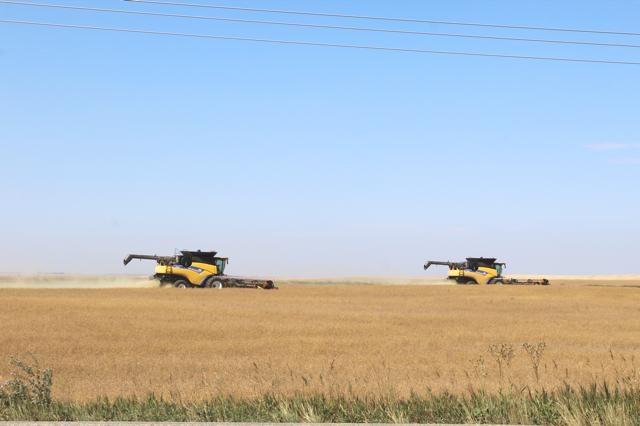A relatively warm and dry week allowed many producers to continue with harvest operations, reported Saskatchewan Agriculture for the week of August 15-21. Provincially, 14 per cent of the crop is now in the bin, and 15 per cent of the crop is swathed or ready to straight-cut. These numbers are well ahead of the five-year average and ten-year average, both of which are eight per cent for this time of year. Last year, despite some rain delays, nine per cent of the provincial crop was in the bin and 21 per cent was swathed or ready to straight-cut. At that time, many areas remained soft and field access was an issue in 2016.
This year, the harvest is most advanced in the southwest, where 30 per cent of the crop is now combined. The southeastern region has 23 per cent combined, the west-central region 11 per cent and the east-central region four per cent. Both the northeastern and northwestern regions have one per cent of the crop in the bin. If the weather co-operates, the majority of producers in the province expect to be in the field by the end of the month.
Harvest varied by crop across the province with 92 per cent of the fall rye, 83 per cent of the winter wheat, 57 per cent of the lentils and 54 per cent of the field peas already combined. Progress was slower for other crops with only 14 per cent of durum, nine per cent of barley, nine per cent of mustard, six per cent of soybeans, four per cent of spring wheat, two per cent of chickpeas, two per cent of oats and two per cent of the canola in the bin. Canaryseeed and flax have not yet been combined, while 18 per cent of the canola and 14 per cent of the mustard have been swathed.
The majority of the province received little to no rainfall this past week, although the Pierceland area reported 89 mm. Many areas in the northwest are saturated and field access will be an issue. With the warm temperatures and lack of rain this past week, topsoil moisture conditions have worsened. Across the province, topsoil moisture on cropland is rated as one per cent surplus, 32 per cent adequate, 40 per cent short and 27 per cent very short. Hay land and pasture topsoil moisture is rated as one per cent surplus, 26 per cent adequate, 35 per cent short and 38 per cent very short.
The majority of crop damage across the province this reporting week is attributed to hail, strong winds, localized flooding and lack of moisture. Producers continue to scout for insects, such as bertha armyworms in canola. Producers are busy combining, desiccating crops and hauling bales and grain.




